Handrails for disabled in the bathroom and toilet

The lives of people with disabilities are very different from the lives of healthy people. When we talk about creating special conditions for people with disabilities, we usually mean, first of all, creating special ramps, installing handrails and elevators for people with disabilities.
To facilitate the process of using any room, the installation of special handrails and other assistive devices is everywhere, they are of primary importance in the bathroom and toilet.
The presence of handrails in bathrooms is the most reasonable in terms of safety, because on a wet floor even a completely healthy person can slip, not to mention people with mobility problems.

Previously, such handrails could be found only in specialized medical institutions. It was difficult to find them on sale, and even if you could get some models through "free-will", they looked more like an instrument of torture. Nowadays it is easy to find any handrails and fixtures for the disabled. You can choose from several designs, depending on the style of your bath or bathroom.
Safety features
Safety is a key criterion for choosing handrails. You need to carefully consider and calculate every movement that a person with a disability will have to make in order to perform a particular procedure.
In addition, make sure that the bathroom floor is free of water and slippery where possible - if the person with a disability slips on a wet floor, it can lead to even more serious injuries and complications. Hang a special bathtub screen, and use special rubber stickers or mats in the bathtub itself. Give preference to rough floor tiles or also use a variety of bathroom mats.
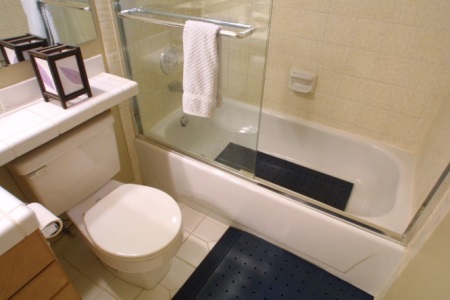
In addition to handrails, special bathroom steps, a changing board, and various seats can help ensure safe water procedures. All these devices do not cancel, but only complement the use of handrails.
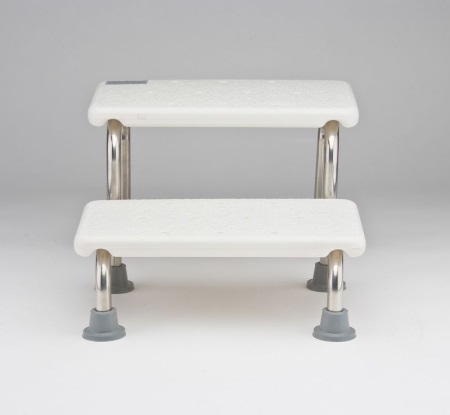
Recommendations for selection
- One of the most important things to consider when choosing handrails - the load for which they are designed. It is necessary to carefully study the technical specifications and consult with the store consultants about the permissible load. This takes into account the height, weight and physical abilities of the disabled person.
- The number of handrails and their installation is carried out taking into account the size of the room - they must not interfere with the free movement of a person. Let there be fewer special devices, but they will be located in the right places. If there is not enough space in the bathroom or toilet, install special handles, angular structures or buy a nonstationary multifunctional vacuum handrail.
- If the patient suffers from arthritis, it is better to give preference to curved structureswhich allows you to reduce the load on the hands by transferring it to the forearms.
- When choosing a handrail, consider how well the patient's vision is good. If it is an elderly person with poor vision, colorful handrails are preferable.
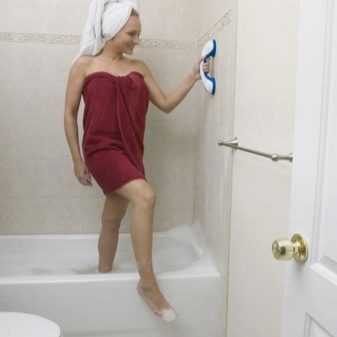
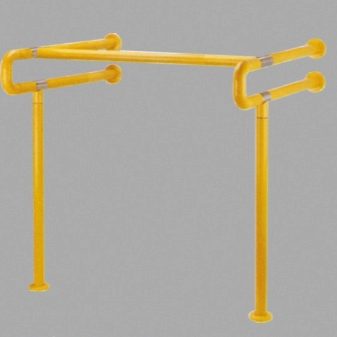
Requirements
Naturally, handrails in sanitary facilities for the disabled have special requirements:
- First and foremost these are The handrails themselves and their fixings are sturdy. It is better if you have a significant margin of safety for the largest member of your family. After all, it is possible that other family members will also use the handrails. The maximum permissible load of handrails is 120-150 kg on average.
- Material for handrails should be moisture (usually chrome-plated stainless steel is preferred) and durable.
- Depending on the individual characteristics of the patient, handrails should have a certain shape (straight or g-shaped) and stops.
- If they are wall-rails, they are They must be attached to a wall..
- Arrange the handrails according to the patient's height - Usually, horizontal handrails are placed at a height of 70-100 cm above the floor.
- Handrails must be cleaned and disinfected regularly.
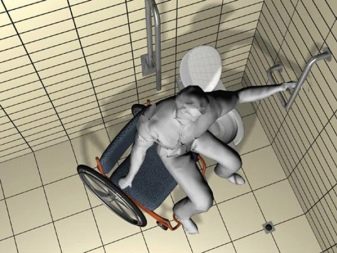
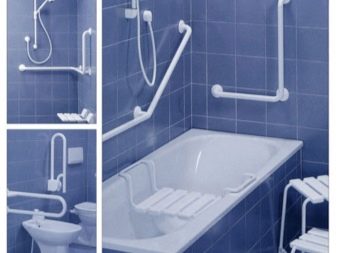
Standard equipment
Handrails can be sold with or without fixation elements. If the handrail is sold with fasteners, they usually come with:
- self-tapping screws;
- dowels;
- magnets to fix the handrail;
- screws;
- anchors;
- brackets;
- hinges;
- crosspieces;
- flanges;
- plugs etc.
Types and materials
Special devices for people with disabilities in bathrooms come in sliding, stationary and hinged.
The most common types of holders and handrails:
- Wall-mounted angled To make it easier to get up and down to the bathtub.
- For sinks with a radius or straight shape - for handicapped people during hand washing.
- HingedFor wash basins with a swivel-type wall, with special handholds.
- wall-mounted stationary - Makes it easier to move around the room
- PortableWith a system of vacuum fastening.
There are stylish handrails that will add sophistication to your interior.
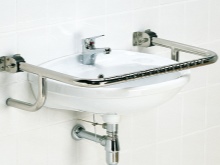
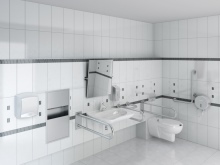
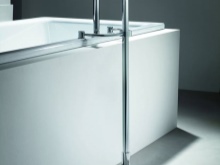
Installation in bathrooms
- First you should measure the size of the room and calculate how many handrails will be needed, what length and diameter, in order to allow the patient to comfortably perform any action and move freely through the room.
- Think about where to mount - on the walls, on the floor or on the ceiling, it will be more convenient to attach certain structures.
- Before you start screwing the handrails in their places, make a mark and estimate how they will all be located: so you can make sure that they are located safely and do not hinder movement and do not interfere with the movement of the room.
- Make holes for the fasteners of the appropriate diameter and depth.
- Insert a dowel into the hole.
- Attach the handrail flange and fix it firmly with the fixing element from the kit.
- Place a plug on top.
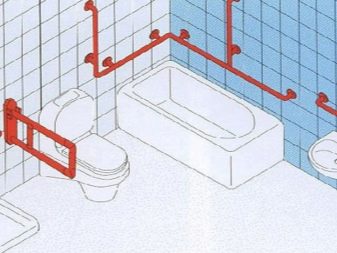
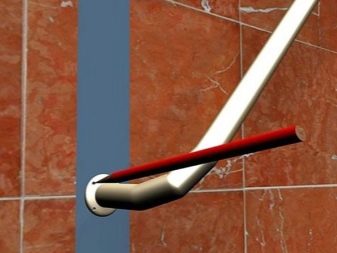
There is also a special type of handrail that is fixed to the wall using vacuum suction cups. In this case, the color indicator on the bracket shows how tightly the handrail is attached to the wall. Remember, however, that such plastic brackets can withstand a load of no more than 50 kg, and therefore cannot take the weight of an adult. They should be used with caution.
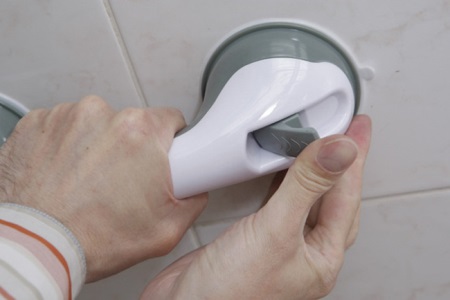
As mentioned above, most handrails are made of stainless chrome steel. Such material has a number of advantages: it is durable, does not deform during use, is moisture-resistant and often It is also often coated with a special antibacterial nylon.
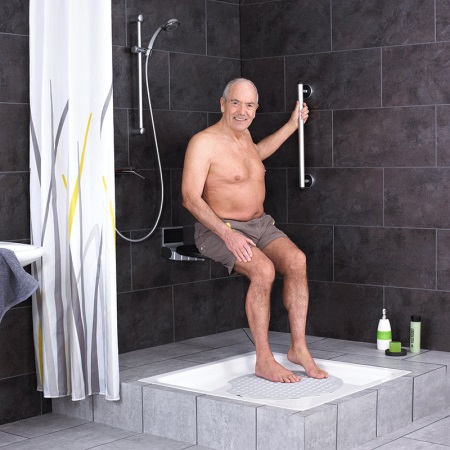
Handrails can be made of hygienic plastic or even wood. The surface of the handrail can be either smooth or grooved. However, note that the latter is not suitable for people with sensitive skin.
Installation in toilets
The process of installing special holders in the toilet is not too different from the installation of handrails in the bathroom. In the toilet, handrails are used primarily to make it easier for the patient to sit down and up from the toilet, and can also be placed around the perimeter of the room, making it easier to walk.
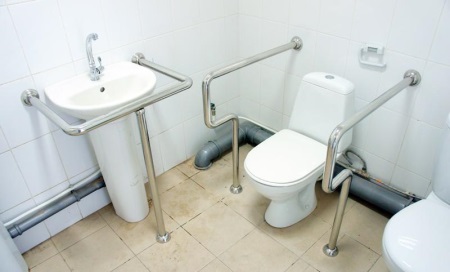
Handrails for the toilet should be rigidly fixed and be able to withstand the full weight of the patient. The most reliable support handrails on the toilet bowl. These handrails can be attached on both sides of the toilet to the floor, and to the wall.
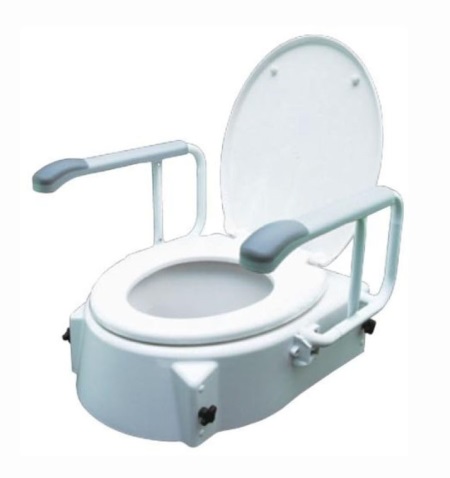
However, the toilet can also use folding toilet handrails, which are hinged at 90 degrees.
Other bathroom fixtures
In addition to handrails, other additional structures for the disabled may also be used in the bathroom.
- Special bathroom stools and seats enable people to sit in the shower cubicle or bathtub and thus relieve the strain on their legs.
- There are special bathtubstubs that are initially equipped with a seat and an airtight door with grab handles.
- Sinks for the disabled have the following modifications: they can have an adjustable angle or height of inclination, which can be changed at will, and they can also have a horizontal connection siphon with the drain, making it possible to drive up to the sink on a wheelchair.
- The use of special hinged toilets has been common in Europe for a long time now. special toilets with folding armrestswhich all public facilities must be equipped with. In Russia, they are still rare.
- For those who are unable to move around on their own there are special hanging trapeze and for those, who don't have the possibility to move about on their own, special overhead elevators have been developed.

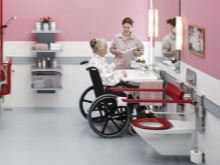
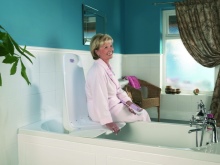





My dad has a handrail installed with suction cups. It turns out that this is not safe. Thanks for the information. I will be replacing them soon.